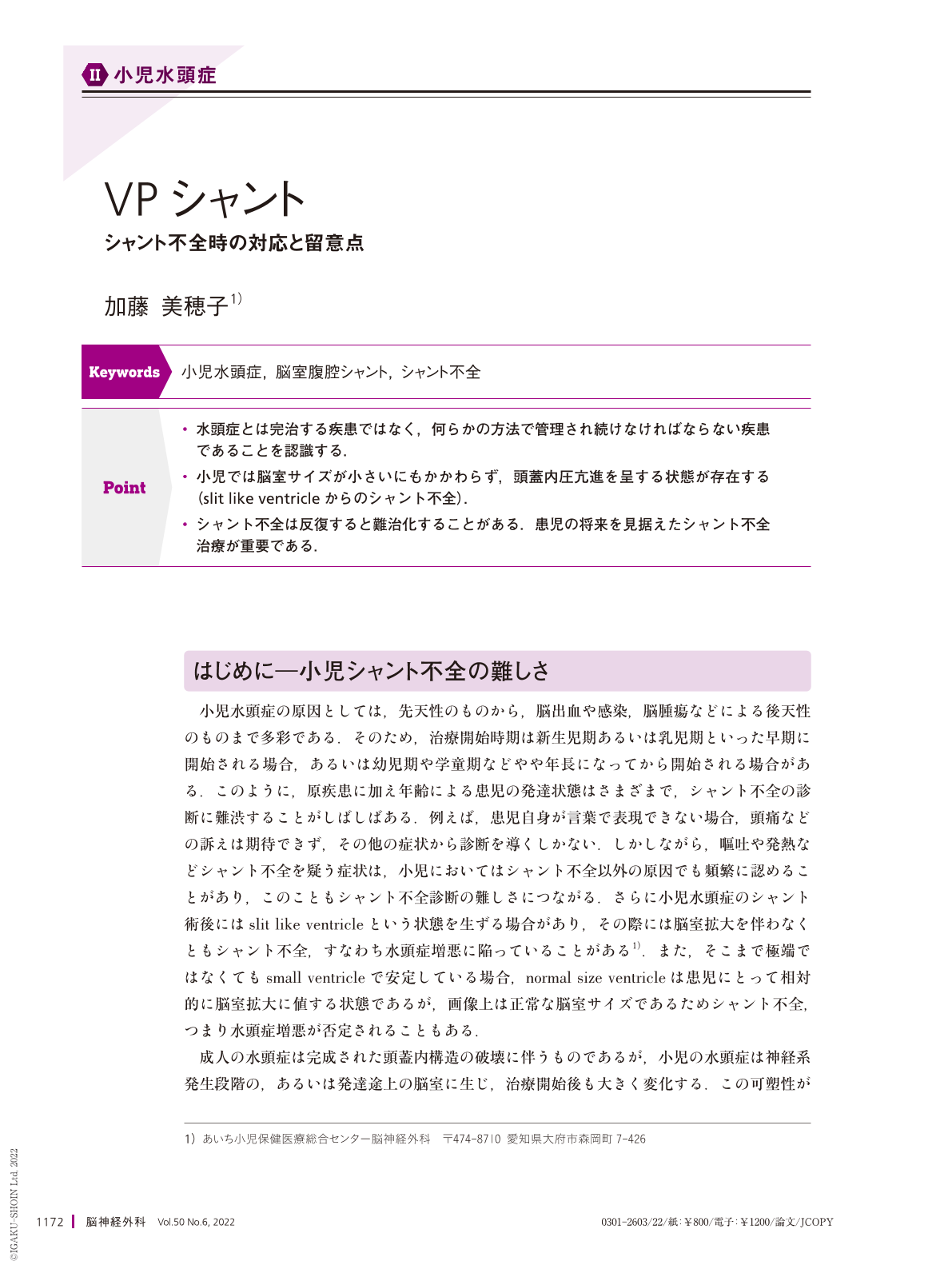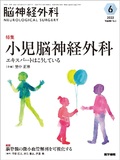Japanese
English
- 有料閲覧
- Abstract 文献概要
- 1ページ目 Look Inside
- 参考文献 Reference
Point
・水頭症とは完治する疾患ではなく,何らかの方法で管理され続けなければならない疾患であることを認識する.
・小児では脳室サイズが小さいにもかかわらず,頭蓋内圧亢進を呈する状態が存在する(slit like ventricleからのシャント不全).
・シャント不全は反復すると難治化することがある.患児の将来を見据えたシャント不全治療が重要である.
Hydrocephalus is a relatively common pediatric neurosurgical disease. Although congenital hydrocephalous is the most common cause, cerebral bleeding, infection of the central nervous system or brain tumors can also cause hydrocephalous in children. As timing of initial treatment varies depending on the cause of hydrocephalous, customized therapeutic strategy should be considered on a case-by-case basis to cope with growth and development. After the initiation of treatment such as shunt, most patients should be placed under clinical observation for life, as permanent devices which can adapt children's growth are not available, and shunt troubles such as occlusion, infection, disconnection, and inappropriate drainage are common during long term observation. Overall, ventriculoperitoneal shunt is a standard treatment. Other options such as ventriculoatrial or ventriculopleural shunt are selected to treat various shunt complications.
In this article, we describe the characteristics of shunt complications in pediatric patients, as well as the symptoms, diagnosis, and treatments for various possible shunt complications. In addition, what kinds of attention should be paid for treating shunt trouble due to infection is discussed using a complicated case report.

Copyright © 2022, Igaku-Shoin Ltd. All rights reserved.


